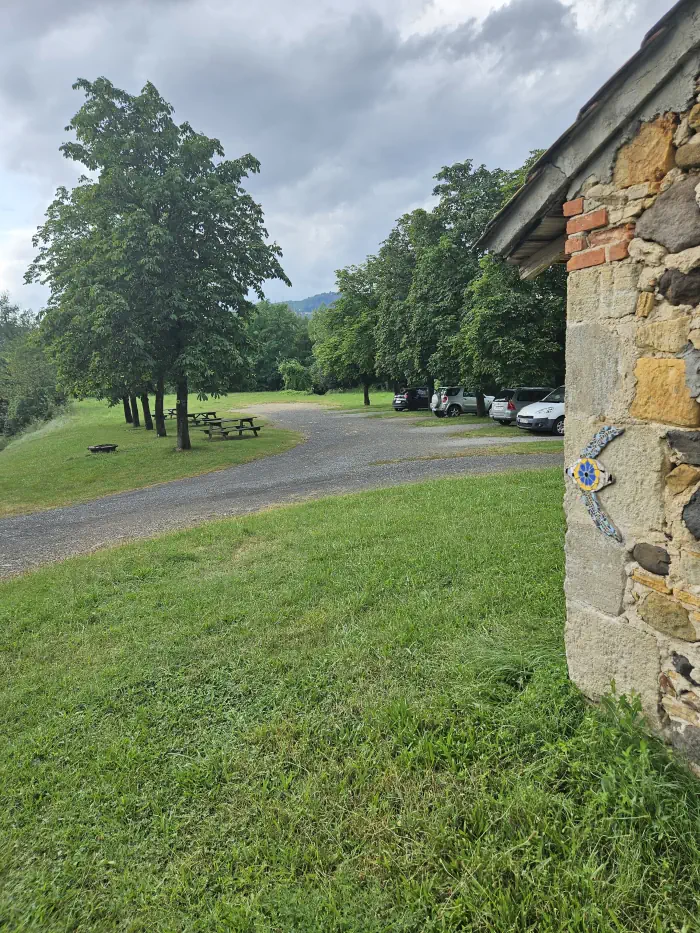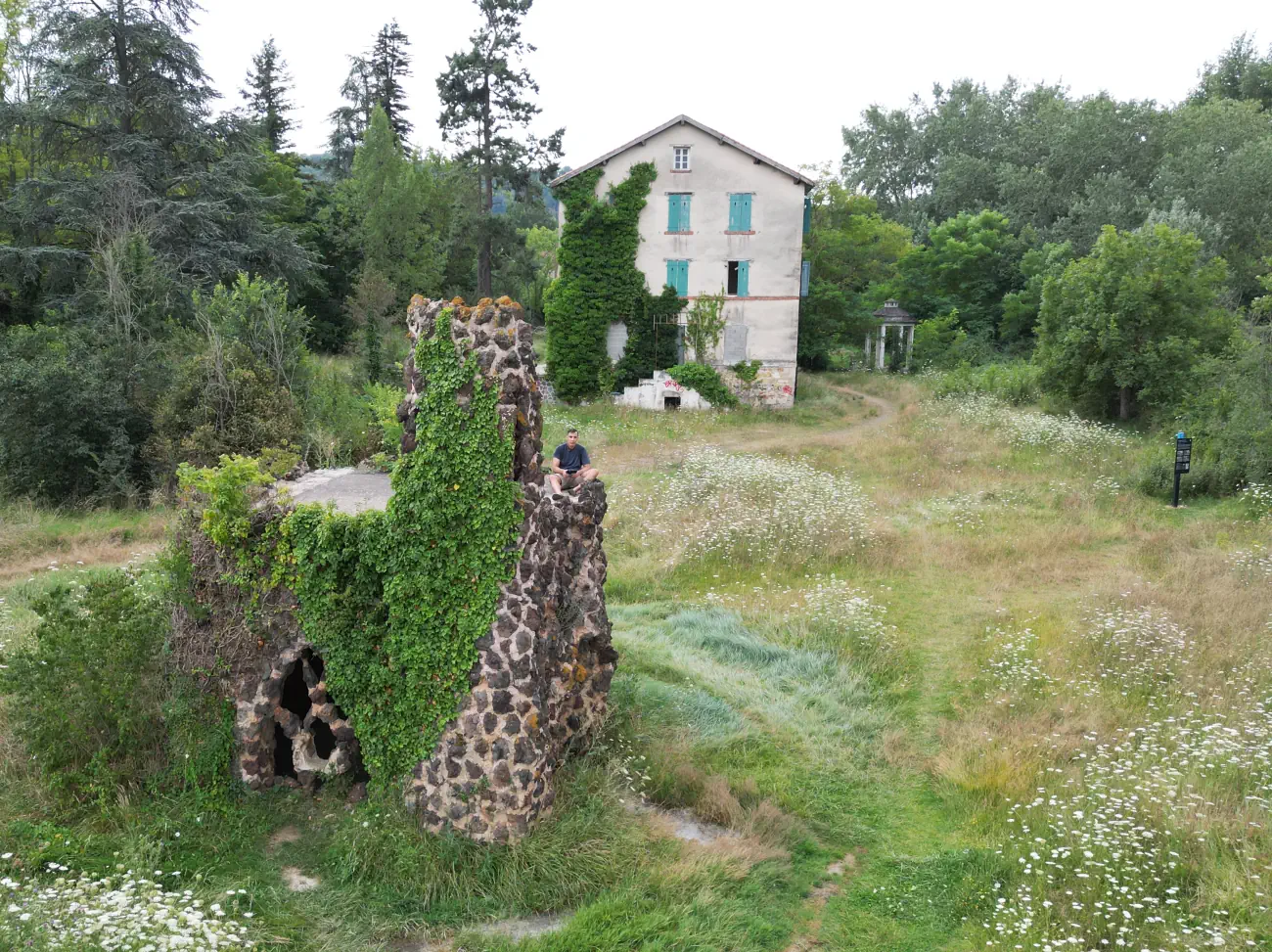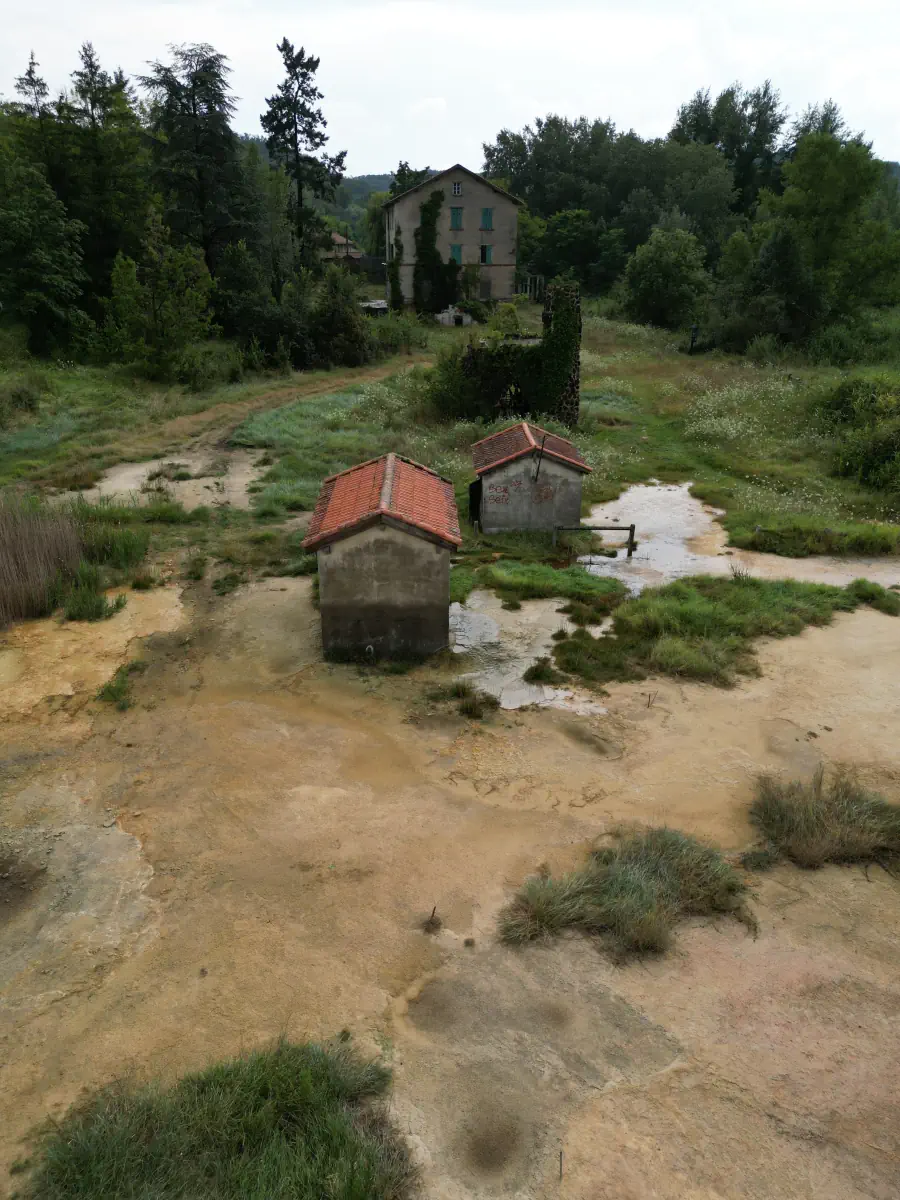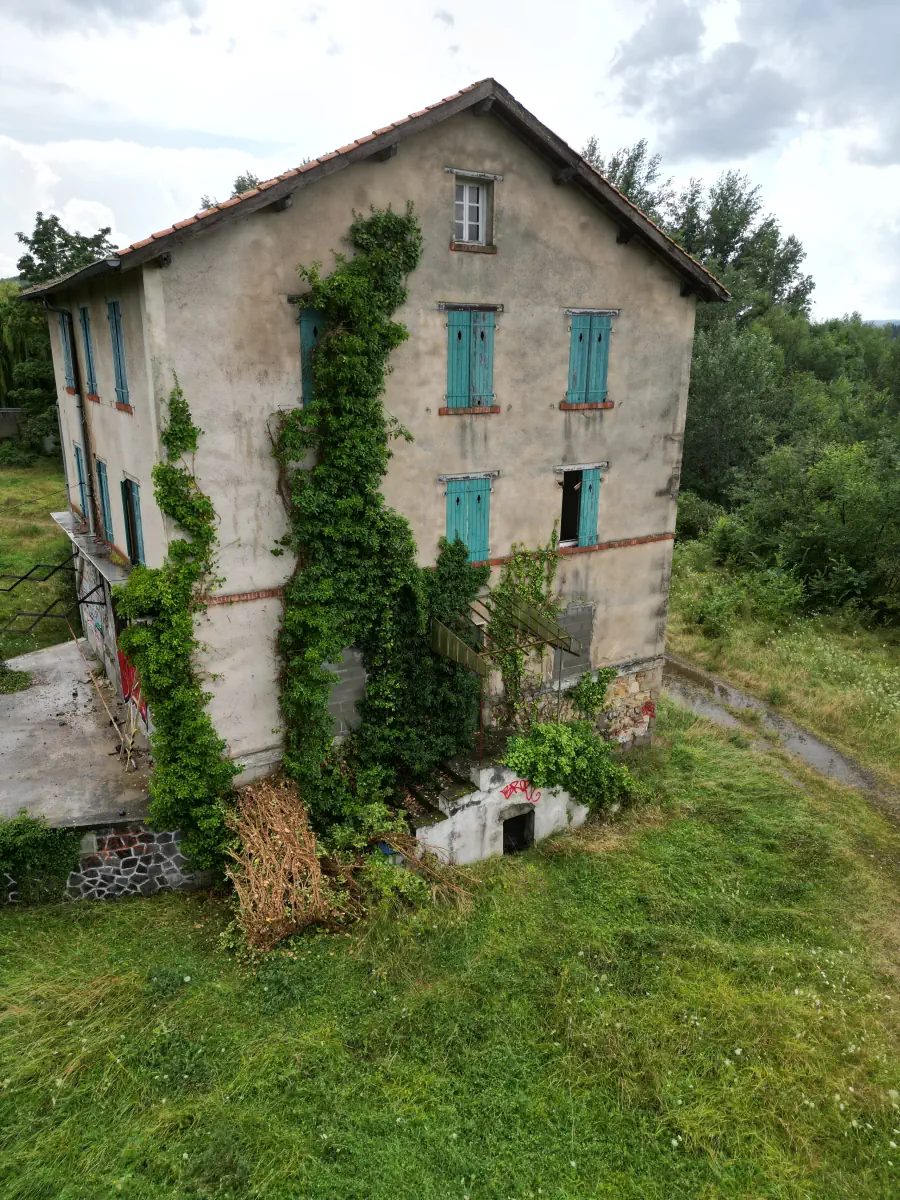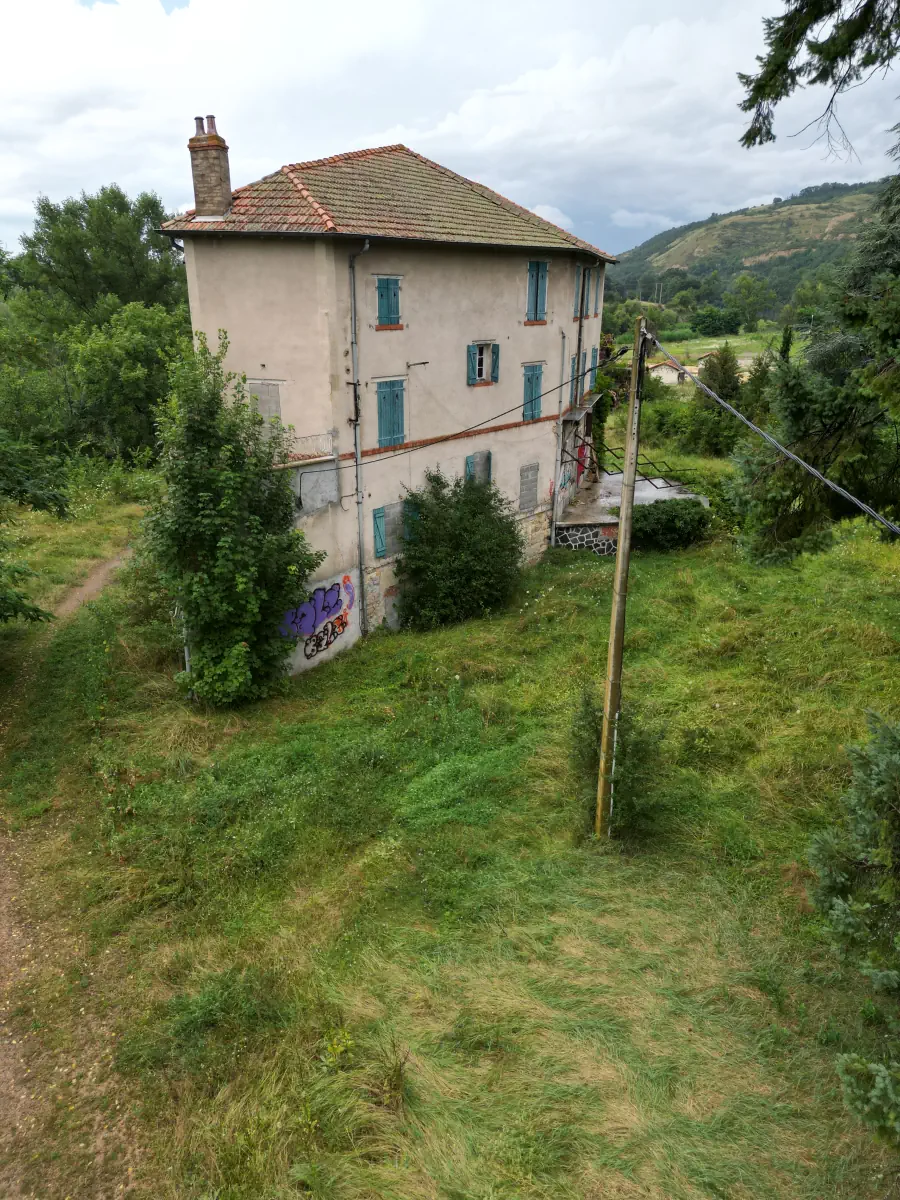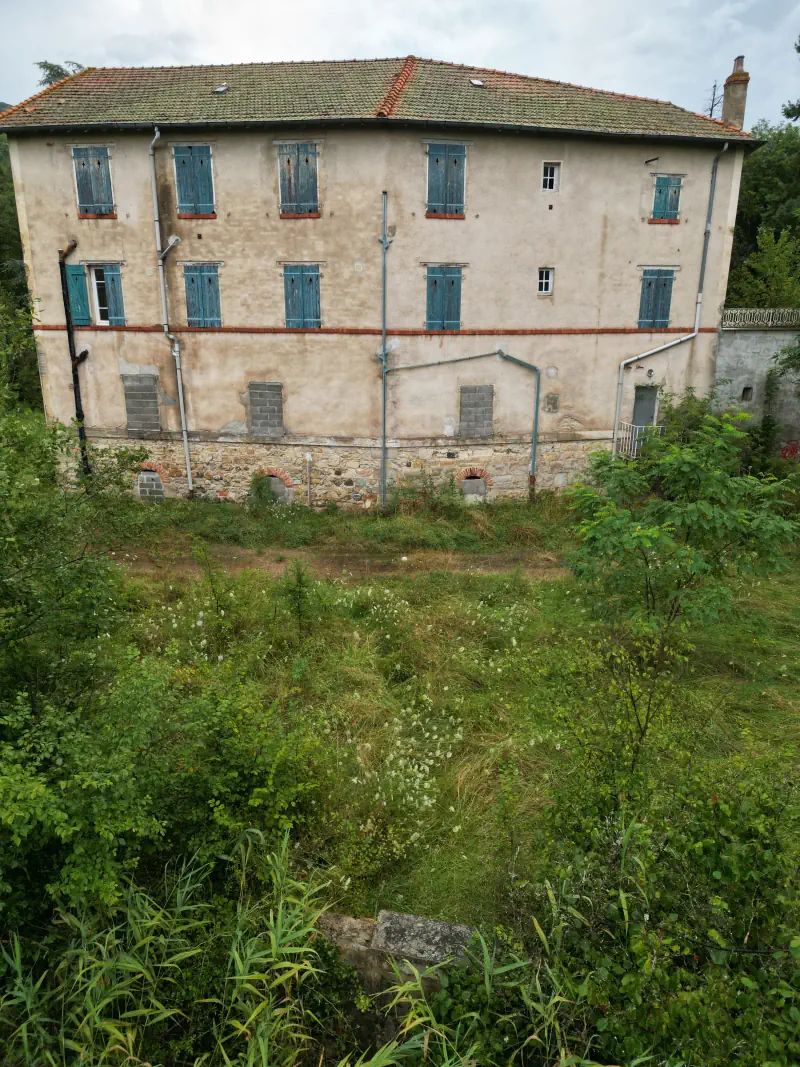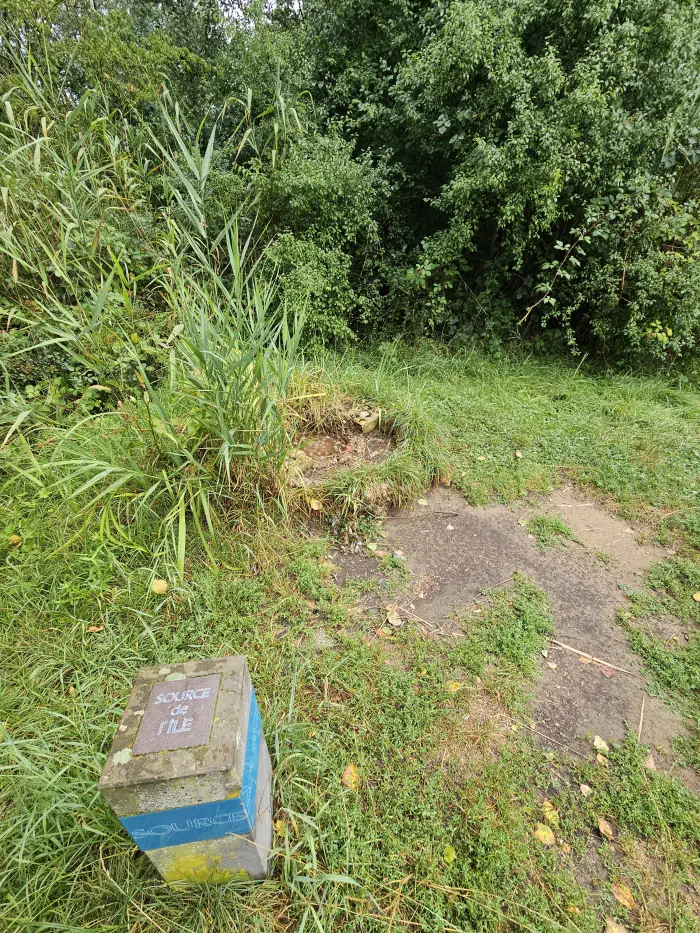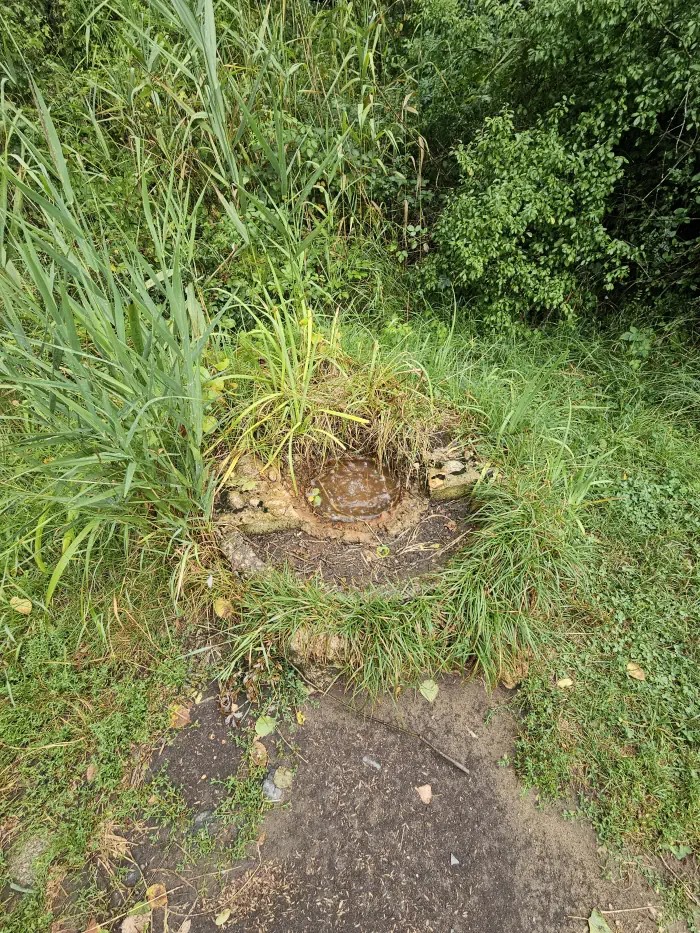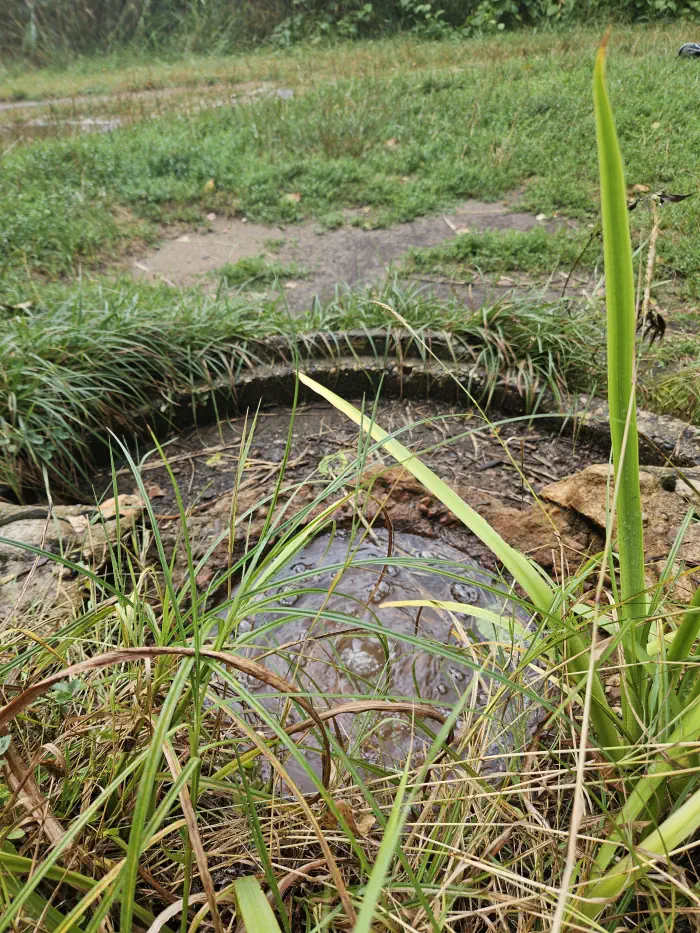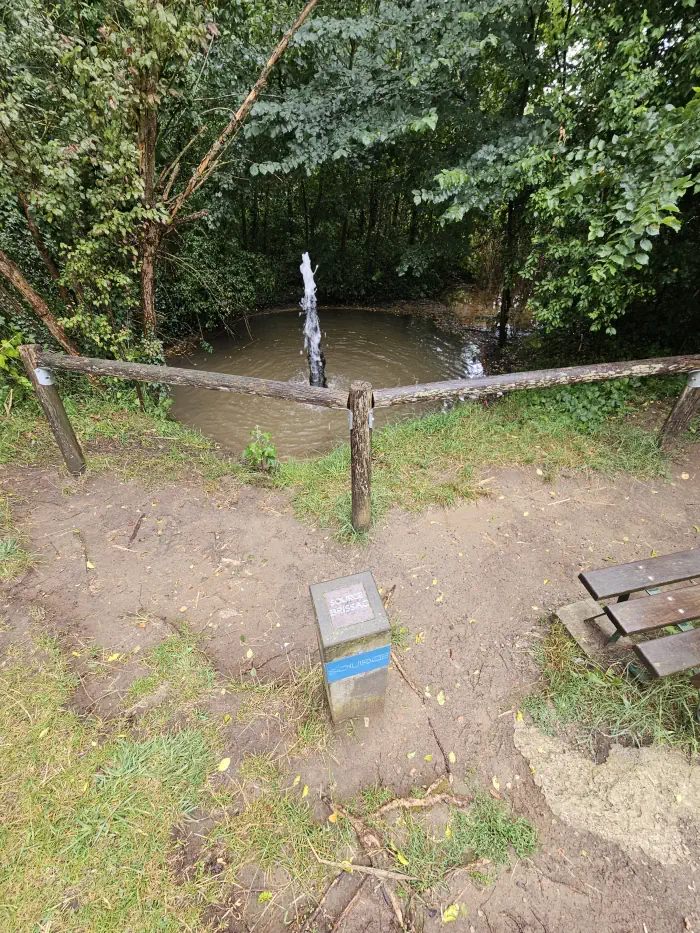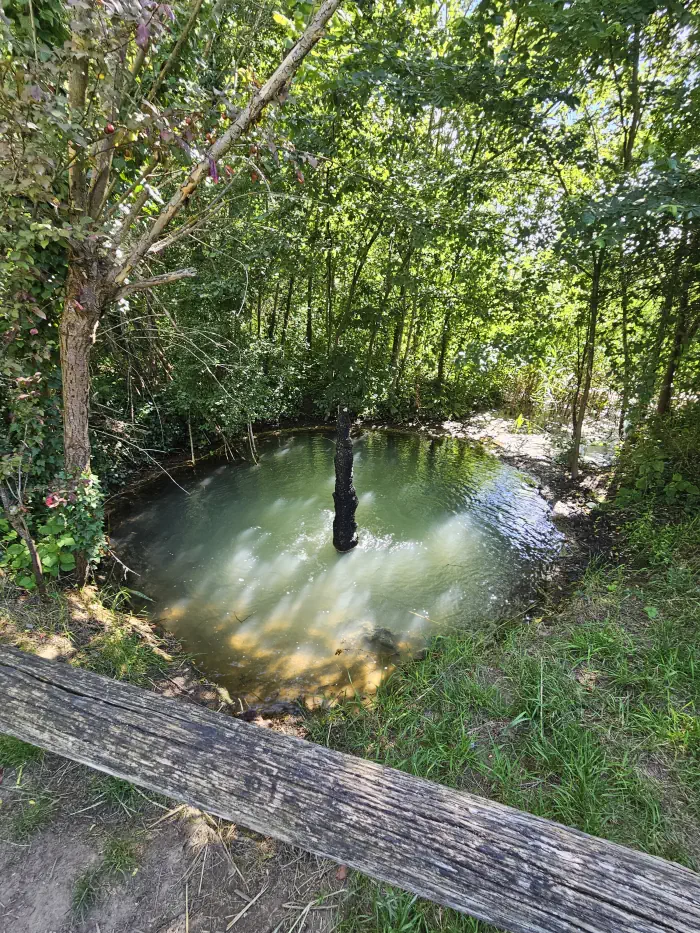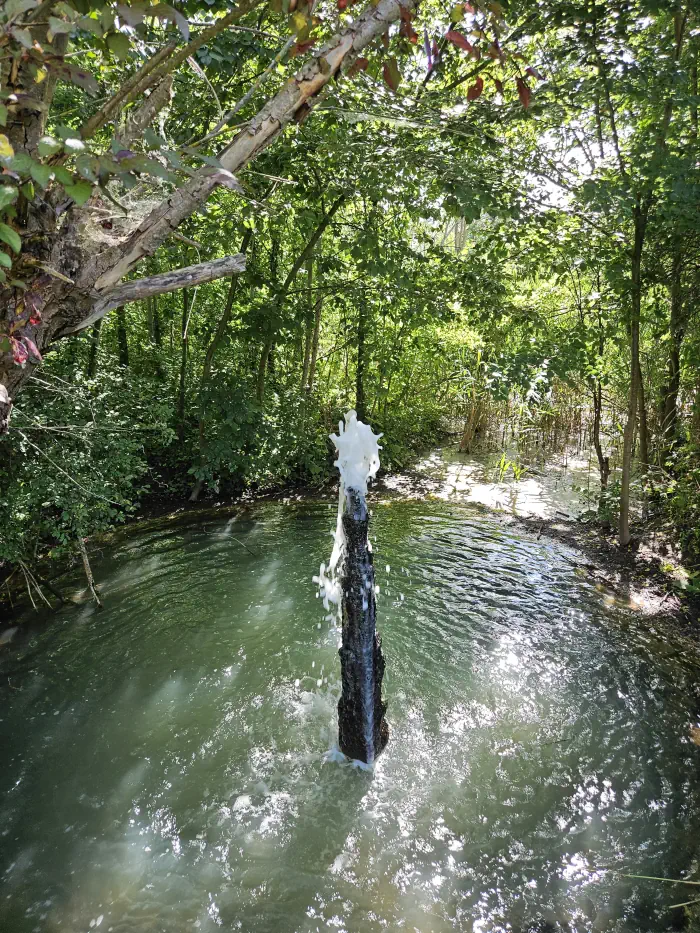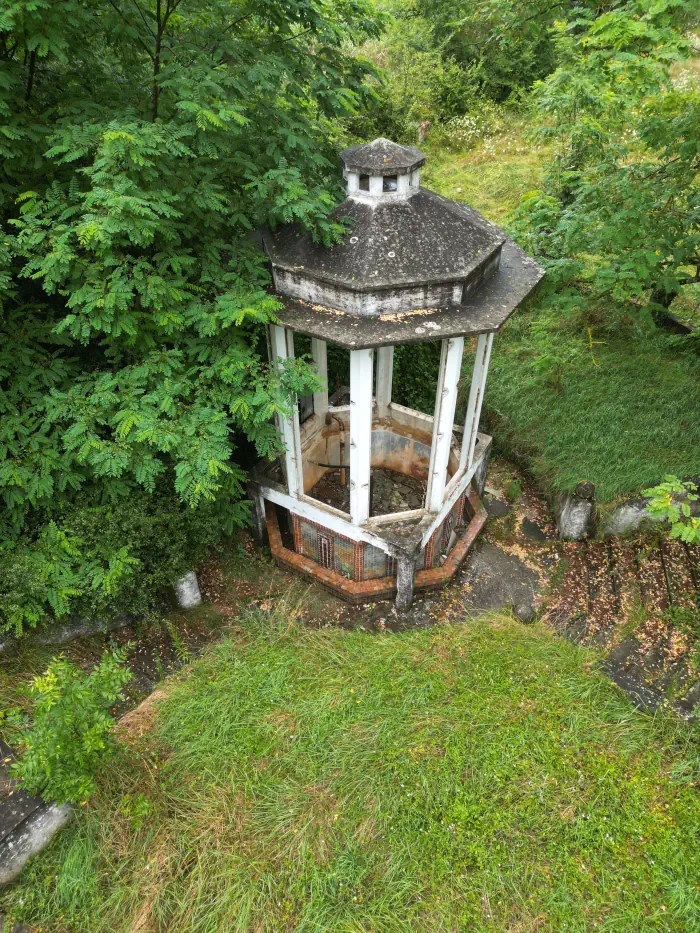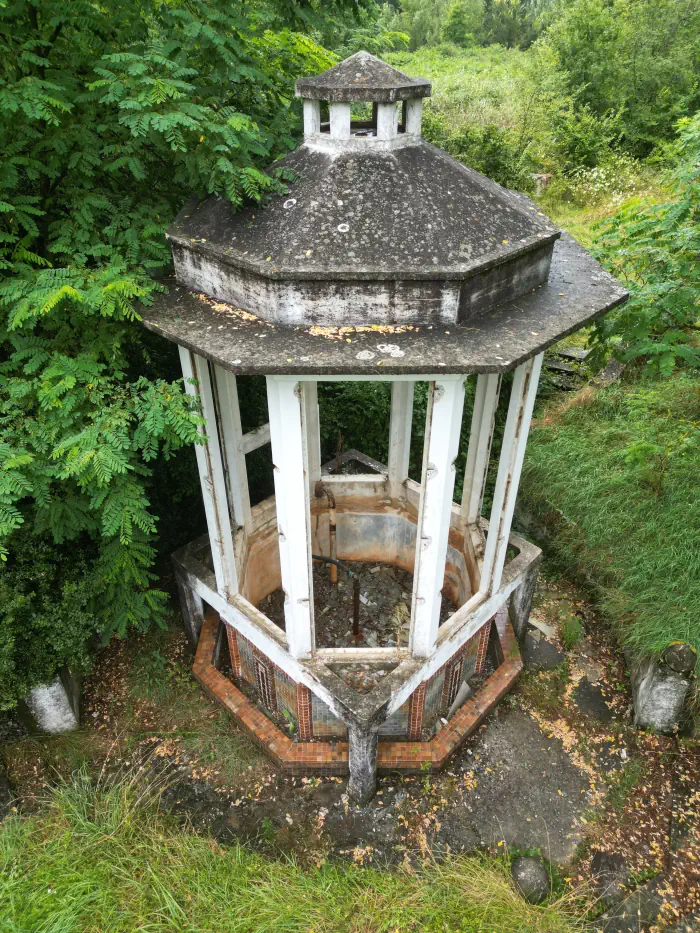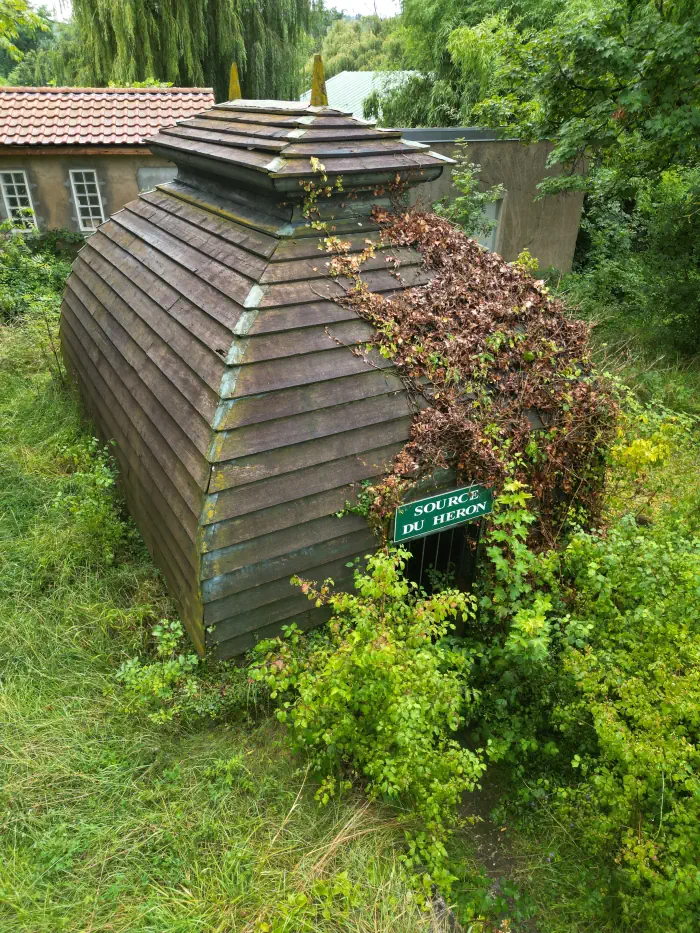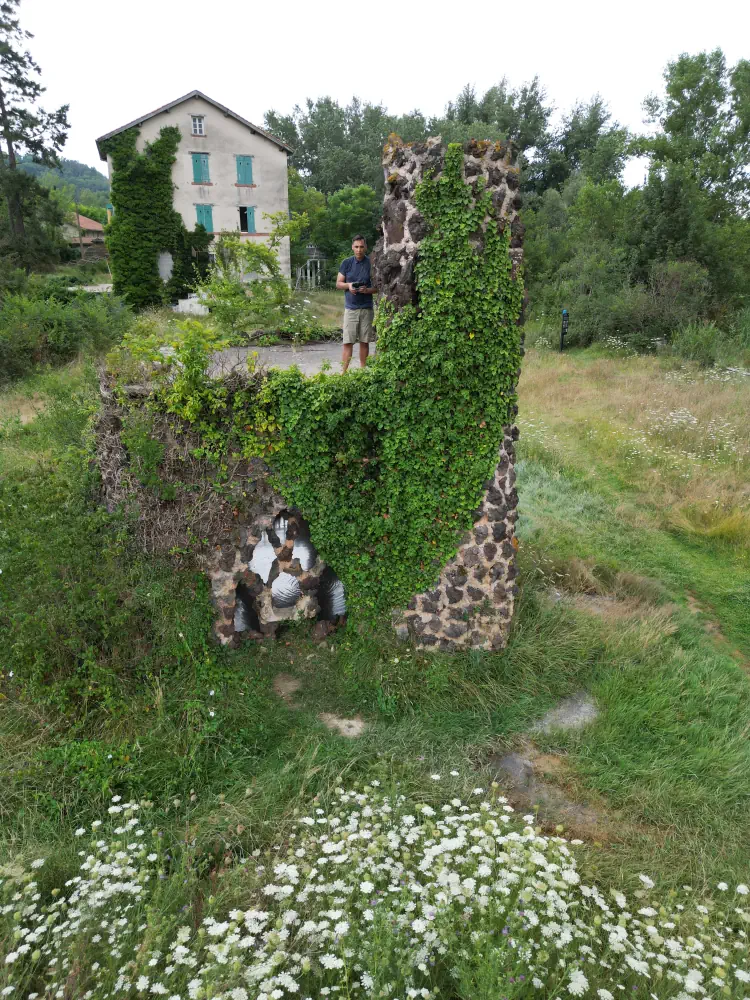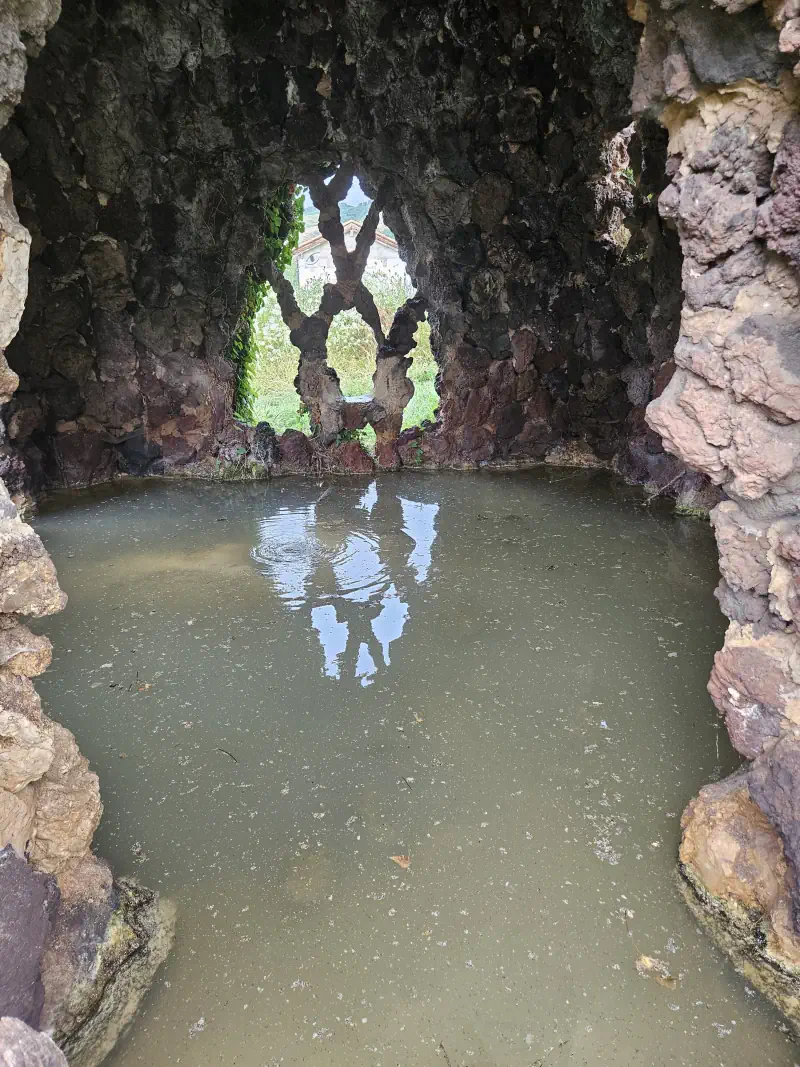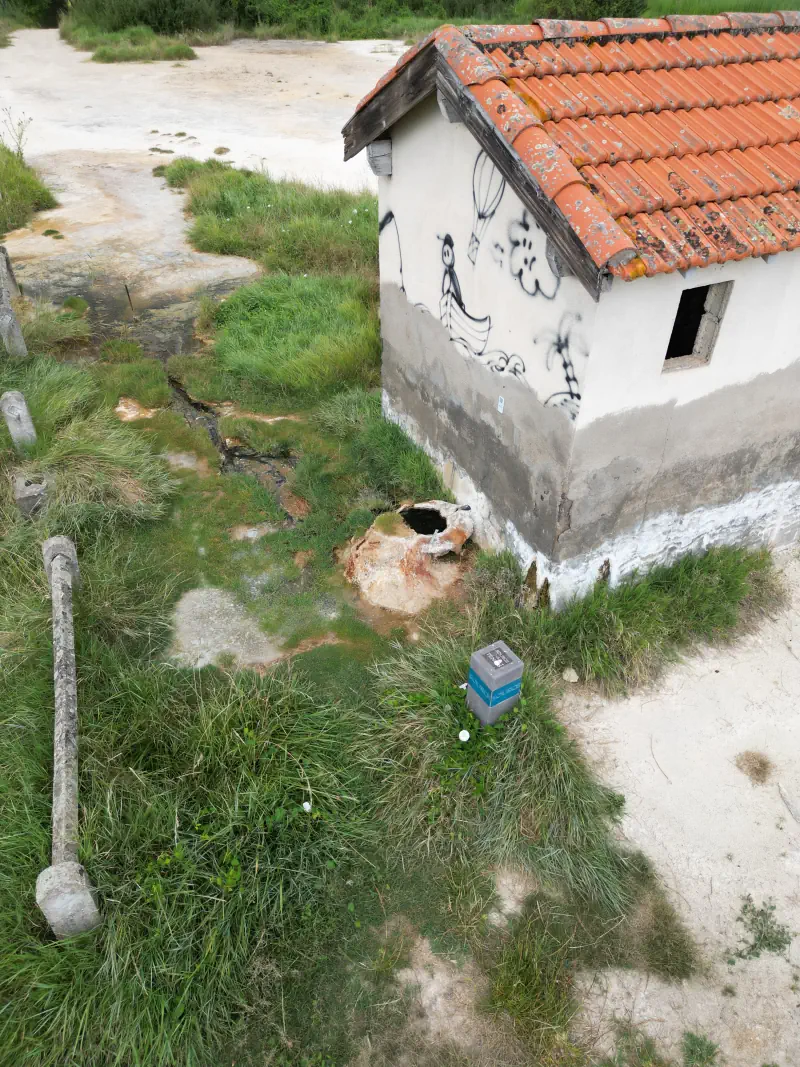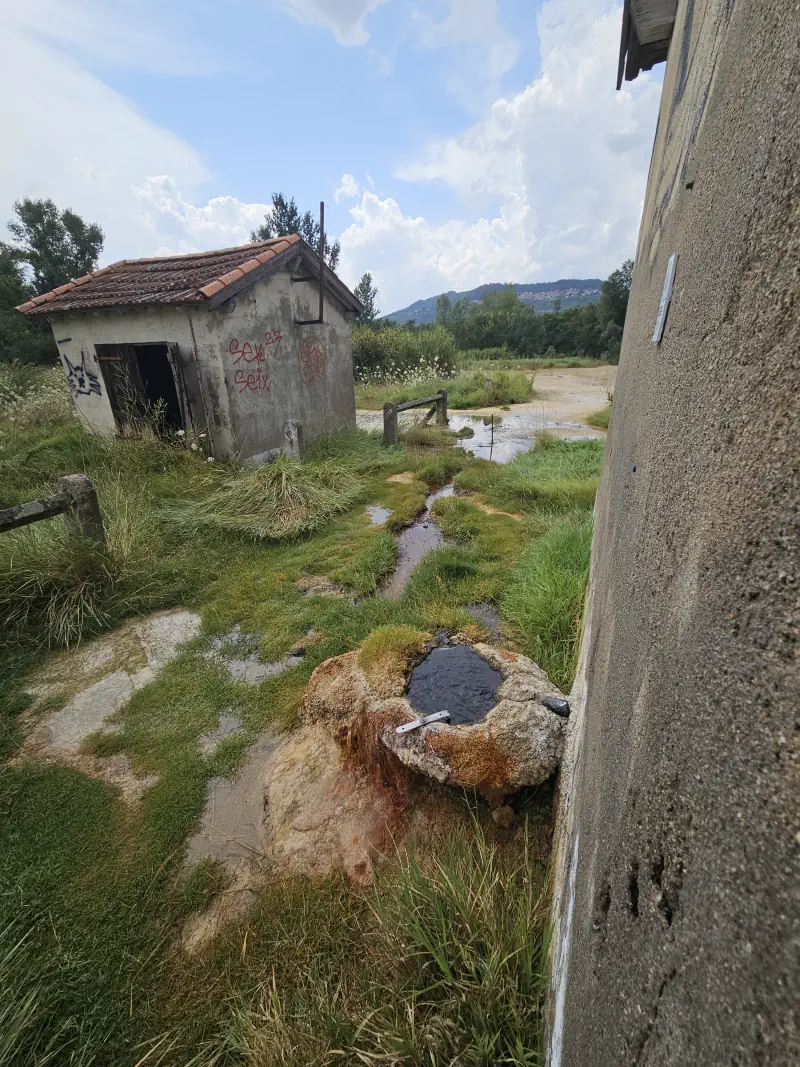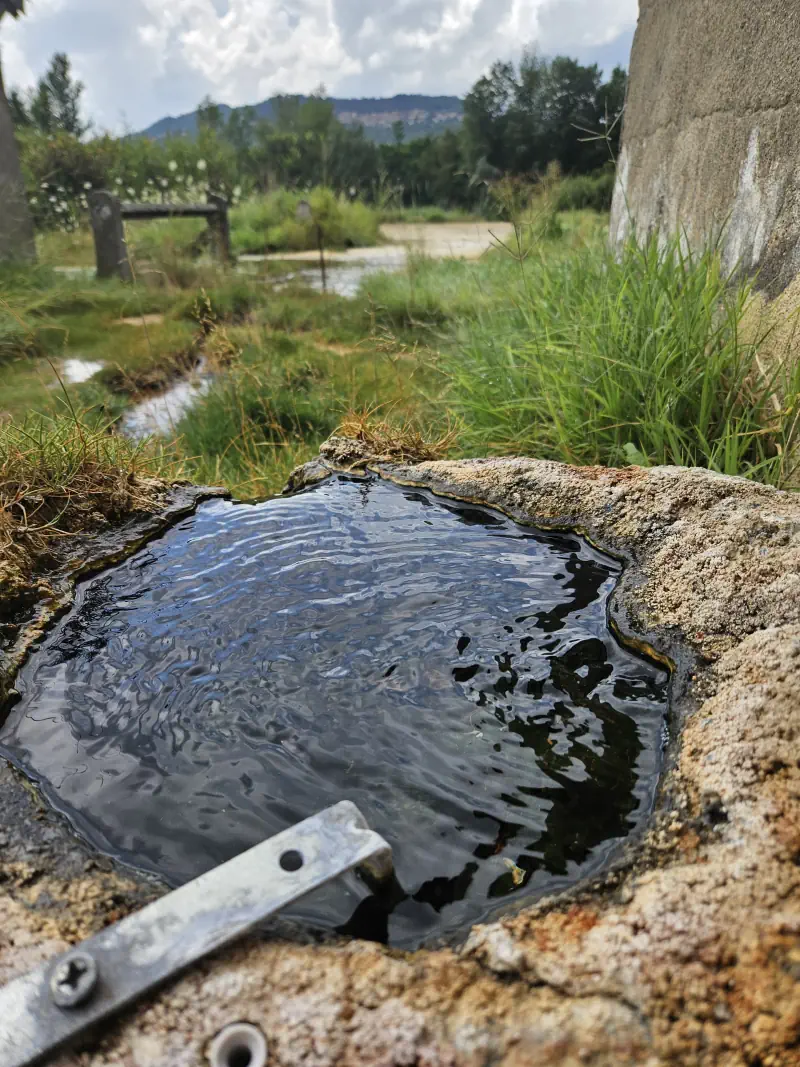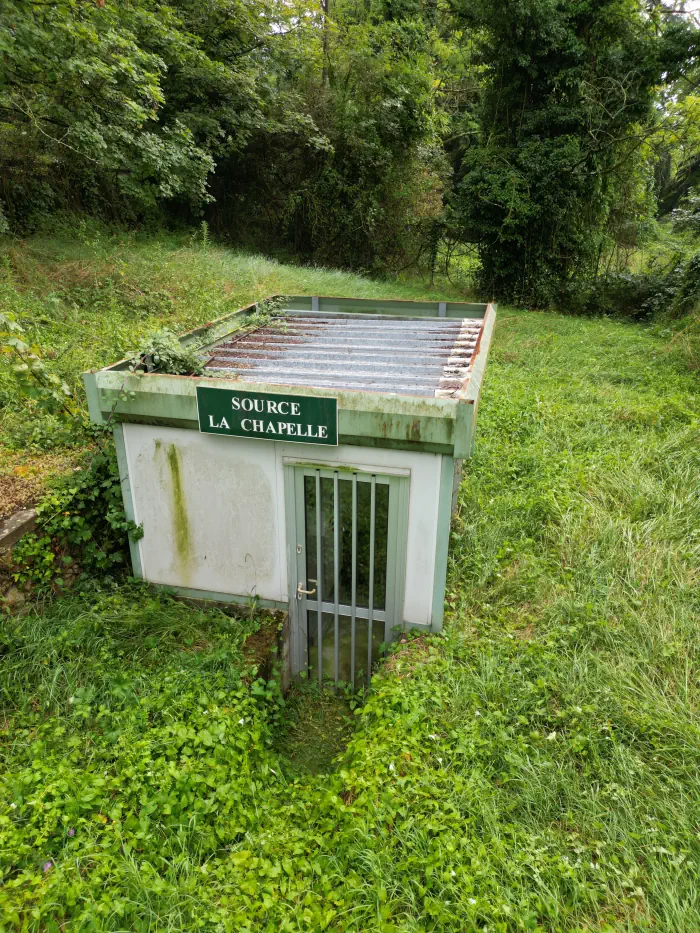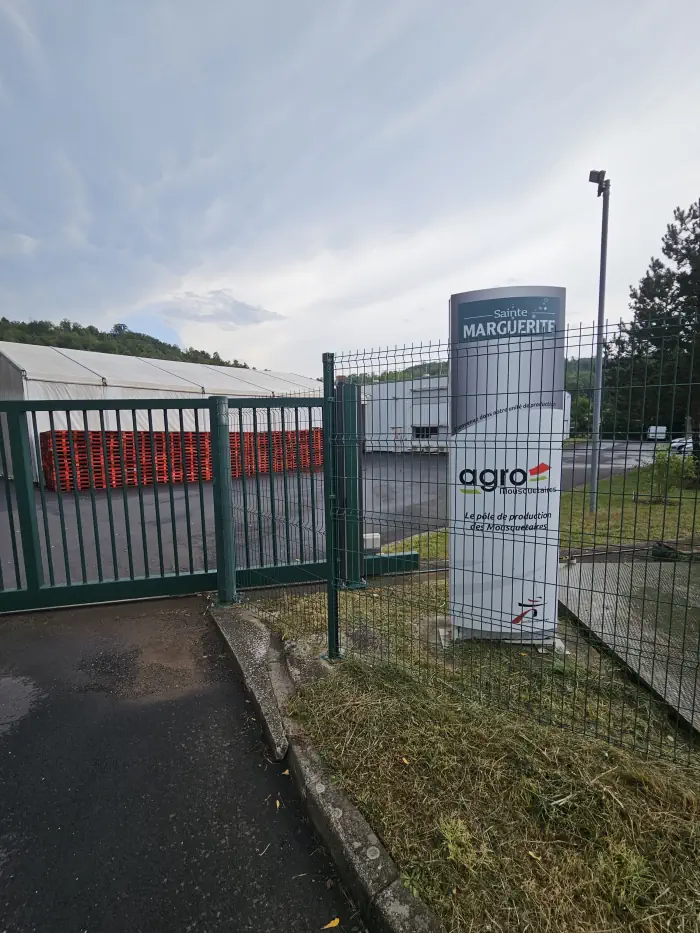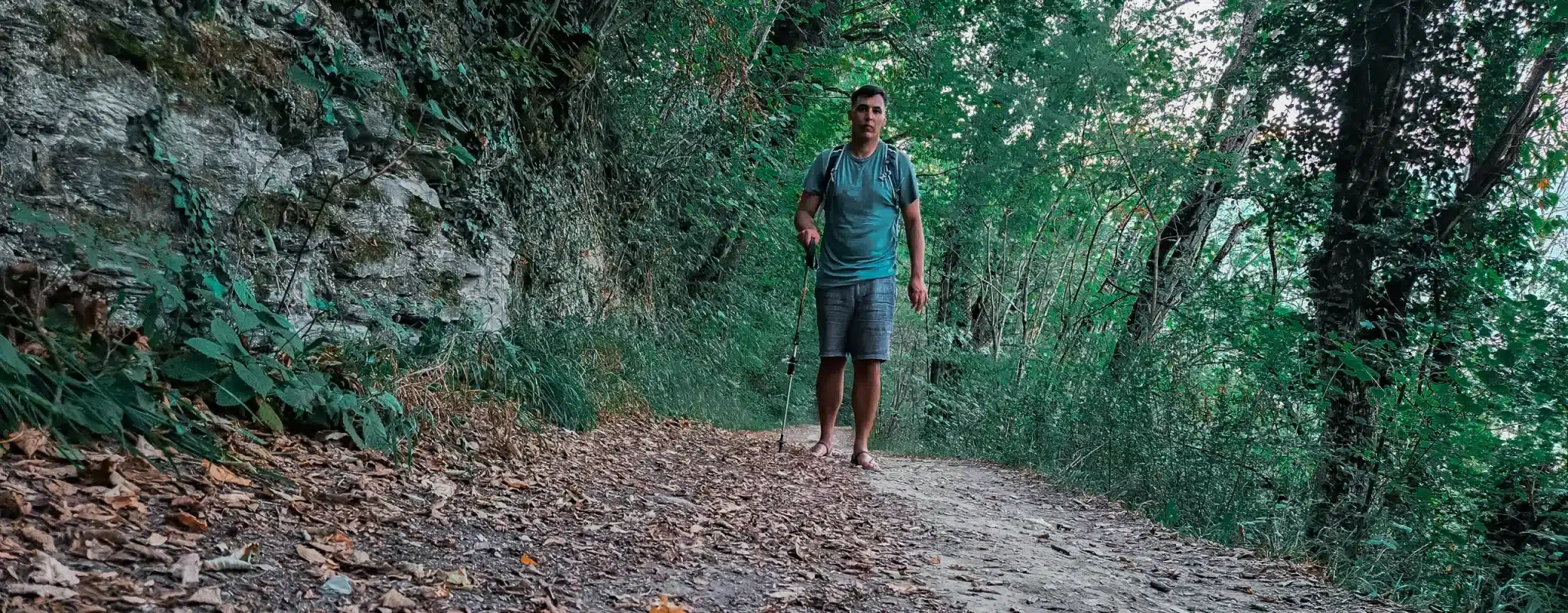Visit the Sainte-Marguerite springs in Saint-Maurice-ès-Allier
- Nature Source Chaude
- Published on
- Updated on 25 May 2025
The charming village of Saint-Maurice-ès-Allier is located in the Puy-de-Dôme department. Perched on a small ridge, it is dominated by the peak of Puy-Saint-Romain. Nearby is the site of Sainte-Marguerite, renowned for its springs which were once popular for their therapeutic properties.
These springs were the main attraction of this small former spa resort, located on the banks of the Allier River, until they were abandoned. I invite you to discover these ancient mineral springs, which have now been forgotten, and admire the beautiful landscape they adorn.
Table of Contents
Access to the site and the history of the place
Some of the springs that once made Sainte-Marguerite famous are still there, and there is a sign at the entrance to the area reminding visitors of the town’s former status as a spa town.
Here is some useful information:
🅿️ You can leave your vehicle in the car park (see location), which is a few minutes’ walk from the site. It is located opposite the Sainte-Marguerite water bottling plant, which is owned by Intermarché.
🪧 You will find a sign labelled ‘Sentier du Geyser’ (Geyser Trail) on the small building at the entrance to the car park. The trail starts at the far end of the car park and runs alongside the river to the right.
⏱️ This free trail takes around 45 minutes to complete, but you are welcome to spend more time there if you wish. The site is part of the Natura 2000 network and is managed by Auvergne CEN. The Eaux de Sainte-Marguerite company owns the site and collaborates with the CEN on its management.
As with any good spa site, several springs with similar properties were located nearby. Once the beneficial properties of these waters had been recognised, it became inconceivable to imagine the area without thermal baths.
The Romans were the first to use these springs. They then fell into disuse, but were rediscovered and brought back into fashion several times throughout history.
A bathhouse was built on the site in 1868, replacing older buildings. While not a work of art, it was notable for its simplicity. The establishment grew in popularity, eventually attracting up to 600 visitors a day.
However, the establishment and its springs were sold at auction at the court’s request in 1889.
The site
Set in a green environment, there were no major spa resort-worthy distractions (casino, golf, etc.) to enhance the experience.
Nevertheless, up to 600 spa visitors per day flocked to the area, demonstrating their satisfaction with the benefits of the thermal springs. The main reasons for visiting were to undergo spa treatment and to maintain good health.
Every day, the site offered an uplifting spectacle: patients made their way to the many refreshment stands dotted around the spa grounds. They sought good health by walking short distances through a vast, well-maintained garden.
The spa establishment was built to the comfort standards of the time and was equipped with a thermal water distribution system. A network of pipes can be seen running along one of the pavilion’s façades (see the photo below). The pavilion must have contained numerous rooms and facilities dedicated to bathing and various treatments.
It was also necessary to address the issue of the lack of naturally hot thermal water — that is, water with a temperature above 40°C. Currently, all remaining springs supply water at temperatures below 30°C, which feels rather lukewarm.
The temperature of the springs is currently too low for bathing without artificial heating.
In order to ensure the comfort of bathers, it was probably necessary to install a heating system, which would have been expensive at the time.
Moreover, technological advances in the 19th century, coupled with the public’s enthusiasm for mineral waters, encouraged small-scale operators in Auvergne and other regions to heat their mineral waters — which were sometimes initially no warmer than 8°C — and offer hot baths alongside refreshment stands. Many people had their own small spa establishment at that time, some of which were equipped with only two or three bathtubs.
However, the impact of heating the water on its intrinsic properties must be considered. As the water in the bath is hotter, its positive effects on the body could be more pronounced. However, this additional heat could also hinder the benefits associated with the thermal properties. I invite you to read the article entitled ‘The amazing health benefits of a hot bath‘.
As this is a former spa resort, all the springs on the site have been used. A specific layout has been designed for each refreshment stand, with each spring tapped.
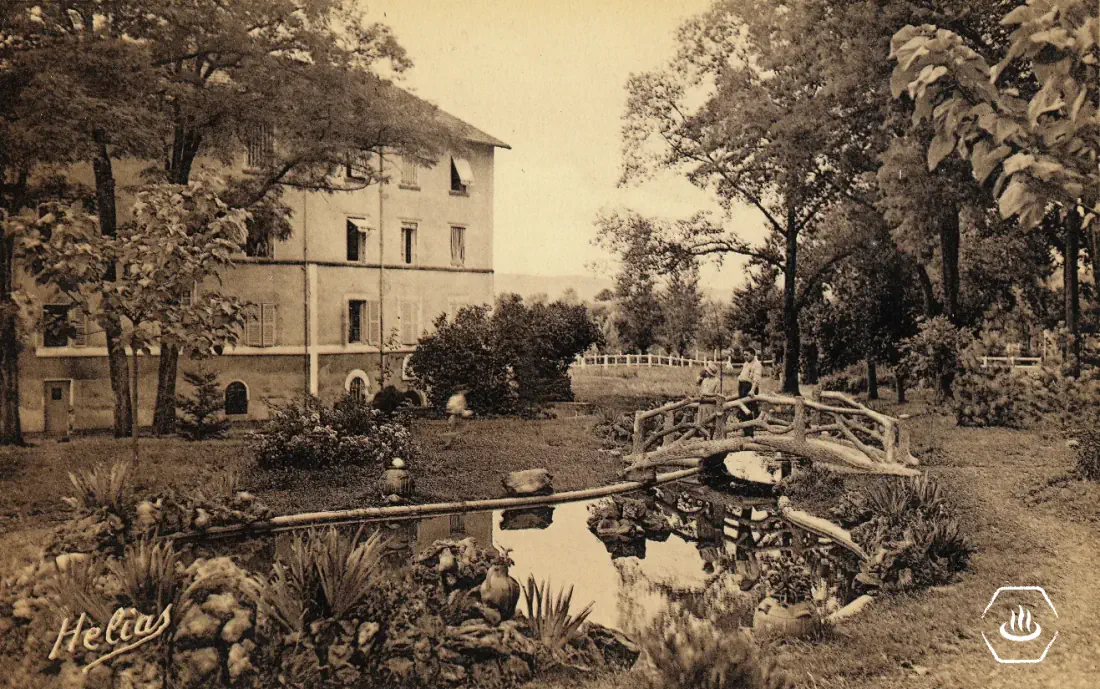
There are also other accessible mineral springs in the surrounding area. While some have been abandoned and are sometimes littered with rubbish, others are well maintained. To see them, head to the opposite bank of the Allier in Les Martres-de-Veyre. You may also be interested in reading our article, ‘Visit the Saladis Springs in Les-Martres-de-Veyre, Auvergne‘.
La source de l'île
The source de l’Île (Island spring), also known as ‘Jules César‘ or ‘Roman‘, is the most discreet of all. It flows silently, hidden from view. Its evocative name suggests an ancient, perhaps Roman, origin. A concrete signpost stands next to the spring, but it is relatively inconspicuous.
The spring was discovered in 1885, when it emerged on a small island in the middle of the river. Until 1920, it could be accessed via a footbridge, as can be seen in the photograph on the information board. However, during a severe flood, the Allier River changed its course dramatically, leaving the spring around thirty metres from the riverbank once the island had become connected to the mainland.
Today, you can see the spring’s water flowing out through a small opening at the top of the catchment. Although this geyser is not particularly spectacular, it provides an entertaining sight as the water gushes out intermittently.
Finally, as you can see, the river is very close by, and it was an important source of food. The region’s waterways were particularly rich in trout back then. The islet must have been an idyllic place to fish. Spa guests caught the trout themselves, which were then used to complement the fresh produce dishes prepared by the hotel’s chefs.
La source Brissac
This spring is an unmissable attraction for visitors. You can sit on a bench and watch the thermal water shooting up into the air for several minutes. The waters of this intermittent geyser are channelled and eventually blend with those of the reed bed. This striking spectacle occurs every 20 minutes.
When active, the geyser emits the smell of rotten eggs (H₂S), which some people find pleasant, while others do not. The area is then filled with the smell of sulphur, which has beneficial effects on the respiratory system. Read the article ‘How to Cleanse your lungs with simple, natural ways‘ to find out more about this powerful therapeutic gas.
Finally, the water temperature should be around 25°C, or even slightly higher.
La source Robinet
The thermal refreshment stand is connected to the spring via two visible pipes at the base of the small lantern-shaped structure.
People came here to undergo the drinking cure. Spa guests would drink several glasses of this mineral water throughout the day.
However, given that several hundred people visited the station every day at the height of the season, it is likely that the refreshment area was busy at certain times of day. In addition, water drinkers had to drink at times specified by the medical inspector, which were usually the same for everyone. Typically, it was necessary to drink on an empty stomach in the morning and before the two main meals. The spring has since dried up.
La Source Valois or Source de la Grotte
A small original stone shelter has been built to protect the source de la Grotte (Cave spring). Water gushes from the spring, creating ripples on its surface. This water is rich in minerals. The white specks floating on the surface are calcium deposits.
Finally, this place is also perfect for taking photos to commemorate your visit. A narrow staircase leads to the top of the ‘cave’, from where you can admire the surrounding area.
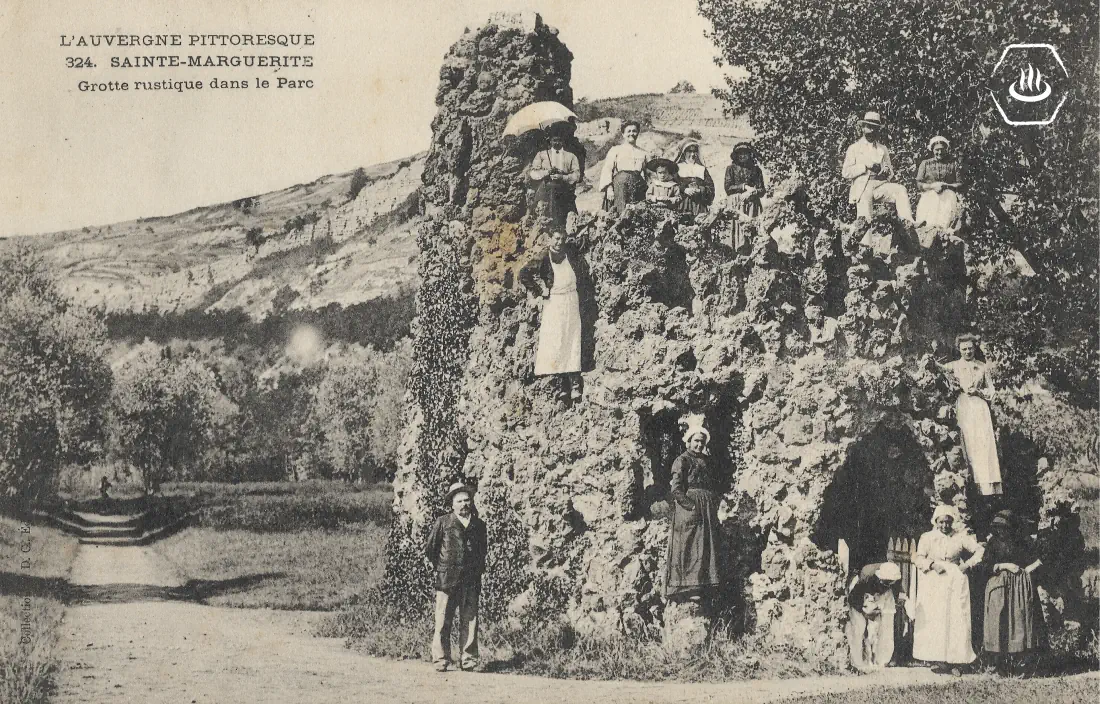
La source du Tennis
One of the small houses on the site covers Tennis spring. At the foot of one of its walls is a small, colourful travertine basin which collects water at 26°C and funnels it into the meadow. This has resulted in the formation of coloured travertine deposits and has enabled halophilic flora — plant species that thrive in salty environments — to flourish.
La source de la Chapelle
The Source de la Chapelle (chapel’s spring) is housed in a small building that resembles a construction site hut. The water is bottled in a factory located approximately 200 metres away, opposite the car park providing access to the site. This water is sold under the name ‘Eau minérale de Sainte-Marguerite‘ and is owned by the Intermarché group.


